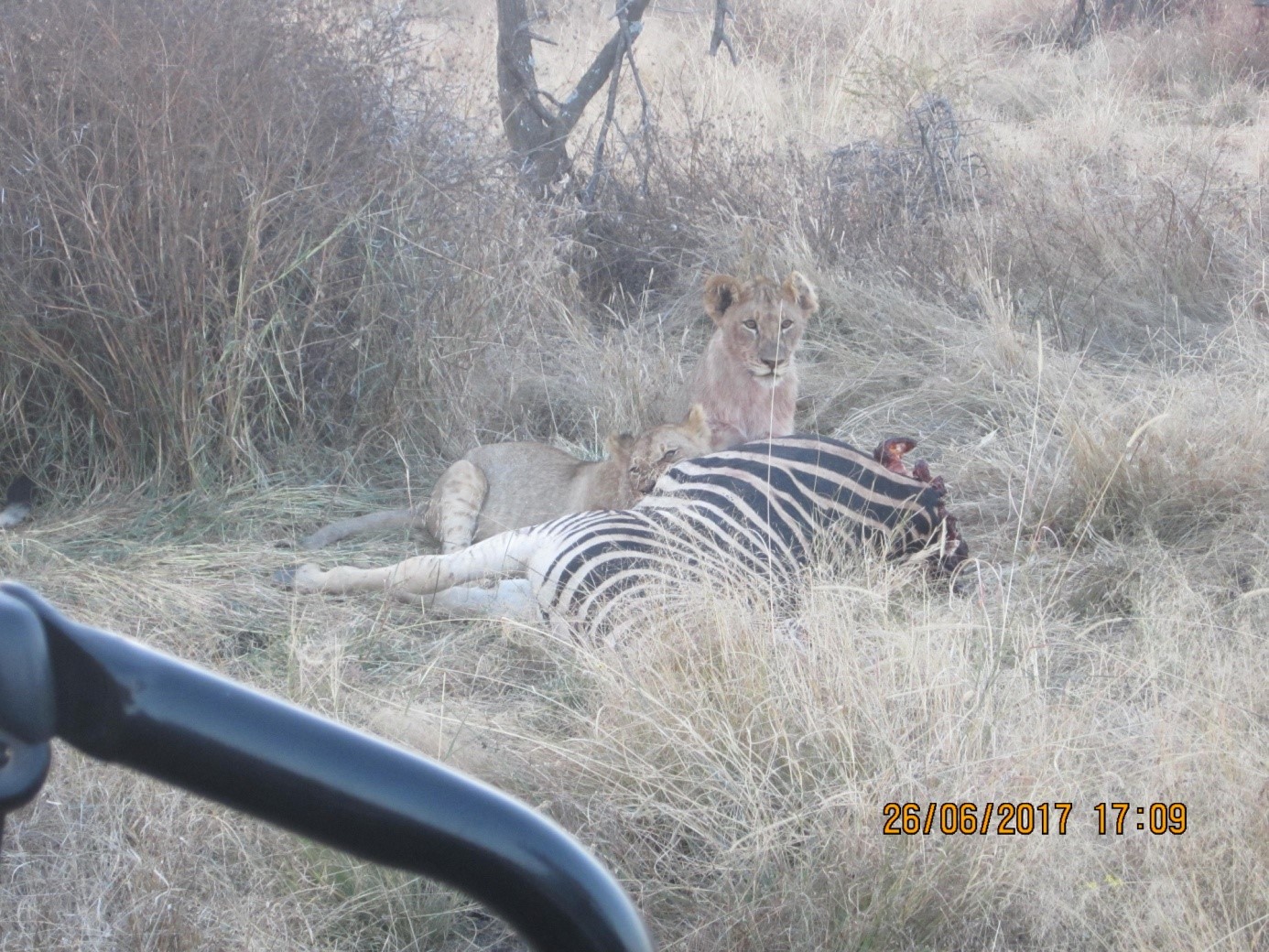Ever since I was little, I have been fascinated by wildlife. When I was eight my mom bought a collection of National Geographic documentaries, each film focussed on a different animal, and I spent all summer watching and re-watching the movies. I think that was when I decided I needed to go on safari one day – and see all the wild animals I was so familiar with on-screen, up close and personal. This summer, I finally fulfilled that childhood dream at Madikwe Game Reserve.
Bordering Botswana, Madikwe is one of South Africa’s national parks. It was established in 1991 when the government decided to “rehabilitate” a 750 km2 area of abandoned cattle farm land by transforming it into a wildlife and nature reserve. Today, it is one of the best places in the country to observe the Big 5 (lion, leopard, elephant, rhino and buffalo).

The success of Madikwe is partially associated with its “smaller” size. The dimensions of the reserve mean that the wildlife see and hear park ranger vehicles frequently, and consequently, the animals have largely become used to the presence of safari trucks. Their relaxed behaviour allows visitors to observe them from hair-raisingly close distances. The size of the park also makes tracking much easier. While in Madikwe visitors are guaranteed to see wildlife on every safari excursion, in Kruger Park, South Africa’s largest national park (20 000 km2), it is possible to drive around for days without spotting more cautious predators.
On my first safari drive I learnt all about tracking, as the guide was on the trail of the two male lions from the “Southern Pride”. To track wild animals, guides rely on fresh paw prints left in the sandy earth. When the animals walk on hard ground, which doesn’t leave clear paw prints, or during windy days when paw prints are quickly blown away, tracking becomes much more difficult. That afternoon, the guide was struggling to locate the lions due to both these factors, as well as the fact that the males appeared to have gone on “border patrol”. The guide explained that lions are usually easy to find during the day because they prefer to sleep when the sun is out – lions sleep for approximately 18 hours every day! Unfortunately, these lions were on the move, checking their territory for invading lions or lionesses.
The hours dragged by without a sighting and my excitement was starting to wane, when the truck’s radio suddenly crackled to life. “Bingo!”, the guide shouted and without further explanation sped off towards a different area of the park.
The zebra was the first thing I saw, because the lions were so well camouflaged in the high grass. As the vehicle steered unnervingly close to the animals (about two meters away!), I spotted two lionesses and four cubs. According to the guide, given the mostly intact state of the zebra, the lions had made their kill just 20 minutes ago. The thrill of seeing the animals so close, as well as their disinterest in me, quickly made me forget my nerves and I proceeded to take some remarkable photographs.

The guide explained that lions hunt in groups and use camouflage to sneak up on their prey before pouncing. As lions are Africa’s largest predators they can prey upon any animal they choose, so while they prefer to stalk zebra, wildebeest and buffalo, when hunting in large numbers, they are also known to kill elephant calves and baby giraffes.
Lions are not very successful predators however, and only kill 40% of the prey they stalk. As a result, the main threat that a lion naturally faces is starvation, particularly if it has been banished from its pride and must hunt alone. Cubs are particularly vulnerable as in addition to starvation, they are threatened by some animals. Predators such as hyenas are a danger to cubs, because they kill lion offspring to reduce competition. Prey animals, such as buffalos, attack lion cubs when they can because they know the babies will grow into predators that will harm the herd in the future.

The biggest threat a lion faces however, is unnatural and manmade. Agricultural expansion causes habitat loss, and poachers are responsible for countless lion deaths. Fortunately, tourism is becoming highly profitable in many African countries, which is incentivising governments to protect native species. As a result, a more significant threat today is climate change.
Climate change has indirectly decimated lion populations by causing severe droughts. Droughts debilitate prey species and make them susceptible to diseases that lions ingest when they feed. Worst of all, these deadly co-infections are predicted to become more commonplace as the climate warms.
Lions are one of the most iconic species on the planet and have long been a symbol of the African savannah. It is sad that such powerful creatures are in such a vulnerable condition as a result of human intervention in nature. I only hope that by supporting conservation groups and fighting climate change, we can rectify this.
Mariana Avelino
Image Credit: Mariana Avelino

